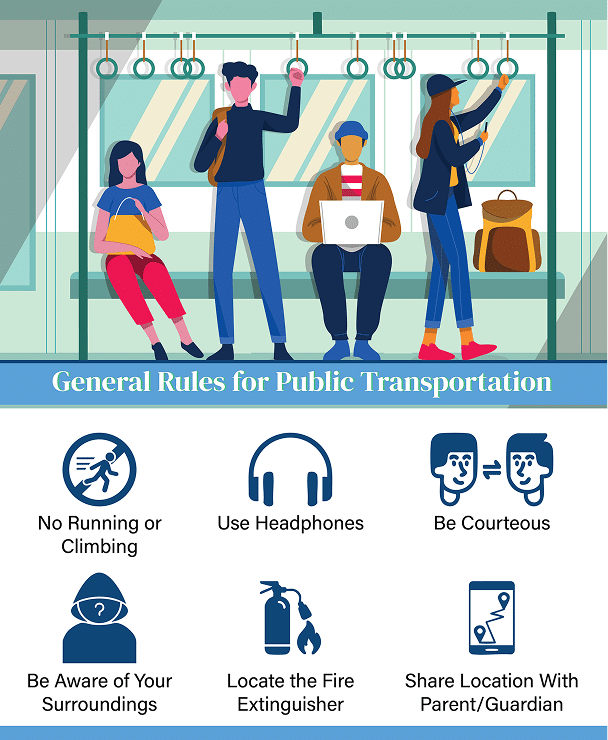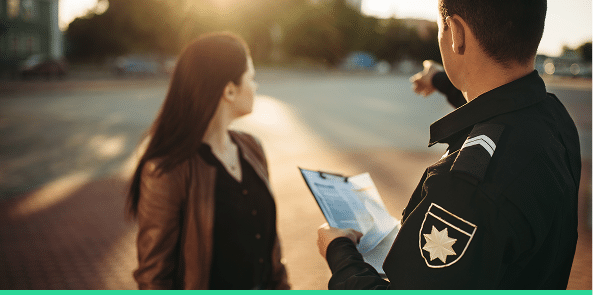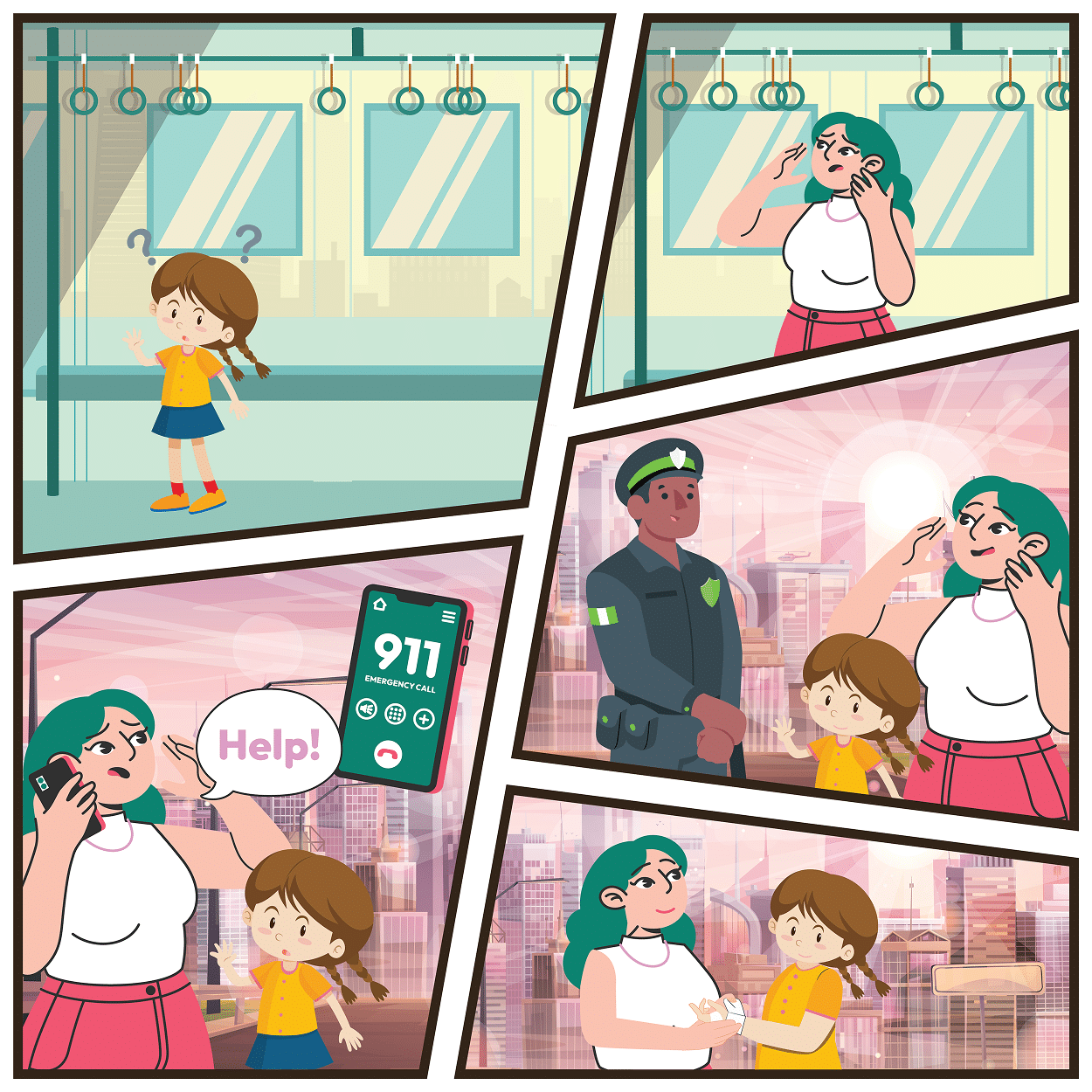Safety Tips for Your Kids Who Need To Use Public Transportation
Many children must take public transit to get to school and other places on their own. Using public transportation alone is a big step for your child toward autonomy. However, parents likely have safety concerns. If you’re a parent living in a city, you’ll likely wonder how to best prepare your kids to use public transportation.
Helping your child start using public transit alone is a great way to teach them skills and independence. An important part of this process is ensuring your child knows how to put their safety first when riding public transportation.
DiBella Law has compiled these resources to help parents learn more about public transportation safety for kids. Meanwhile, if your child has been harmed while using public transit, our knowledgeable local attorneys can help.
On This Page
- Talking To Kids About Public Transportation Safety
- Helping Your Child Handle Emergencies While Using Public Transit
- More Information and Resources About Public Transportation Safety
- Legal Rights and Protections for Public Transit Passengers
- Responsibilities of Transit Authorities to Ensure Safety
- Common Legal Issues Involving Accidents or Negligence on Public Transit
- Contact DiBella Law Today for Your Free Legal Consultation
Talking To Kids About Public Transportation Safety
The first step in helping your child use public transit safely is having open conversations about what to expect and how to stay safe. Since children start riding public transportation independently at different ages, tailor your discussion to match your child’s maturity level.
The goal is to inform them—not scare them—so they feel prepared rather than anxious.
When discussing safety, consider your child’s age:
- For younger children (elementary school): Focus on the basics, such as who to ask for help, what transit employees look like, and the importance of avoiding strangers.
- For older children (middle/high school): Have honest conversations about more serious risks, such as sexual harassment or assault, and explain how to report unsafe situations.
One of the best ways to prepare your child is by role-playing different scenarios they may encounter. Acting out these situations in a safe environment helps them build confidence in handling confusing or scary moments on their own.

Managing Your Child's Behavior
Beyond safety, it’s also important to set clear expectations for how your child should behave while using public transportation. When traveling alone, they need to understand proper transit etiquette:
- Younger children should know that running or climbing on buses and trains is unsafe.
- Teenagers may need reminders to be respectful of other riders, such as keeping music and videos at a low volume.
Make sure your child understands that breaking the rules can lead to trouble with transit authorities and cause issues with fellow passengers. By setting clear expectations and practicing safety strategies, you can help your child navigate public transportation responsibly and with confidence.
Helping Your Child Handle Emergencies While Using Public Transit
There’s no way to fully insulate your child from emergencies while using public transit. However, teaching your child how to respond to common emergencies can help them remain safe and minimize harm.
What To Do if Your Child Is Lost or Confused
Even the most street-smart kid can become lost or confused while using public transit alone. To lower the chances of this happening:
- Teach your child how to read public transit maps and understand where they are in the city.
- Make sure they know their usual routes and key landmarks.
If they do get lost, they should:
- Talk to a transit agency employee for help—knowing how to identify them by their bright green vests or uniforms.
- If no transit employees are available, look for another parent with children to ask for assistance.
- Call or text you immediately if they have a phone, which should always be charged and turned on.
- Keep your contact information written somewhere in a hard copy in case their phone dies.
How To Recognize and Report Unsafe Situations
Teach your child to trust their gut when something doesn’t feel right. If they notice an unsafe situation—such as a broken piece of machinery, a reckless bus driver, or a person behaving strangely—they should:
- Distance themselves from the situation.
- Get off the bus or train if they feel unsafe and contact you as soon as possible.

Contacting Transit Security or Law Enforcement
Your child should know how to seek help from authorities when necessary.
- Show them where security booths and call boxes are at the subway stations they use frequently.
- Have them program the number for transit security into their phone.
- Let them know that if their drop-off location is in a school zone, they can also ask school administrators for help.
- Make sure they understand that calling 911 is always the best option in a serious emergency, such as a fire, severe injury, or crime.
If they need to call 911, they should be ready to provide important location details, such as:
- The platform or bus stop number.
- The station name.
- Nearby landmarks.
First Aid Basics for Common Transit-Related Injuries
Teach your child basic first aid in case they get hurt while using public transit. It’s helpful for them to:
- Keep band-aids and antiseptic ointment in their backpack for minor injuries like cuts.
- Know that if they experience a serious injury—such as a bad fall—they should call 911 immediately.
By giving your child the knowledge and confidence to handle emergencies, you can help ensure they stay as safe as possible while using public transportation.

More Information and Resources About Public Transportation Safety
Contact your local transit agency or municipal government for more location-specific information about how to help your child stay safe while navigating public transportation.
Additional information and resources about public transportation safety for kids include the following:
- The National Safety Council’s guide to bus transportation for school children
- The Federal Transit Administration’s 2024 National Public Transportation Safety Plan
- The American Public Transportation Association’s public transit advocacy and safety guidelines
- The National Center for Missing & Exploited Children
Legal Rights and Protections for Public Transit Passengers
Learn your legal rights on public transportation before your child starts using public transit independently. Look into your state and local public transit regulations to see if there are additional rights when using public transportation.
Fundamental rights that all passengers, including children, have on public transit include the following:
The Right to Safe Transportation
Transit agencies must provide reasonably safe conditions for all passengers. This duty includes maintaining vehicles, stations, and stops free from hazards to minimize the risks of injury.
The Right to Accessibility
Under the Americans with Disabilities Act, or ADA, public transit must be accessible to individuals with disabilities. The law covers children with mobility challenges or other disabling conditions that can make using public transit more difficult. Agencies must provide accommodations such as wheelchair-accessible buses, priority disability seating, and audio and visual announcements for passengers with hearing and vision impairments.
The Right to Protection From Discrimination
Title VI of The Civil Rights Act of 1964 prohibits transit agencies from discriminating against riders based on race, color, or national origin. If your child is subjected to discrimination while using public transit, you may have a legal claim against the transit agency.
The Right to an Environment Without Harassment
Transit systems generally have internal policies against harassment and strictly enforce passenger conduct rules. Let your child know that if someone harasses your child on a bus or train, they should inform transit authorities so authorities can respond appropriately.
Responsibilities of Transit Authorities to Ensure Safety
Public transit agencies have certain responsibilities to ensure rider safety. Familiarizing yourself and your child with the things transit authorities are supposed to do can help your child recognize potential problems on public transit.
Vehicle and Infrastructure Maintenance
Transit authorities are required to properly maintain vehicles and infrastructure. They must regularly inspect and repair buses, subway trains, and tracks to avoid mechanical failures that can cause accidents and serious injuries. They must also address hazards such as slippery floors, broken escalators, damaged pavement, uneven floors, broken steps, and faulty doors to prevent slip-and-fall accidents and similar injuries.
Driver and Operator Training and Conduct
Transit agencies must ensure bus drivers and train operators are properly trained and have received background checks before operating a transit vehicle. Bus and train operators must also never be fatigued or under the influence while on duty.
Agencies must consistently enforce safety rules such as speed limits and passenger boarding procedures. Drivers who speed, drive recklessly, or fail to let passengers safely on and off need to receive appropriate consequences from the transit agency they work for.
Security and Crime Prevention
Public transit systems have a legal duty to take reasonable steps to protect riders from criminal activity. These measures include security cameras, employing transit police, emergency call boxes, and adequate lighting. Due to the high duty of care that transit agencies owe to passengers, a transit agency may be legally liable if your child is harmed as a result of negligent security practices.
Emergency Preparedness
Transit agencies must have emergency plans in place for fires, derailments, and medical emergencies. Operators and staff must be trained in appropriate evacuation procedures and first aid.
Common Legal Issues Involving Accidents or Negligence on Public Transit
New Hampshire and Massachusetts both have common carrier laws in place that regulate public transportation. These laws require public transit providers to exercise the highest duty of care to passengers, meaning that negligence is subject to significant penalties.
Rigorous safety regulations and precautions taken by parents and guardians can help children avoid accidents on public transit. Unfortunately, there is no way to completely prevent accidents and injuries caused by negligence from happening on public transportation. Potential accidents or acts of negligence that can occur on public transit include:
Bus or Train Accidents
Bus crashes or train accidents can happen for numerous reasons, including operator error, distracted driving, and mechanical failures. Sudden stops to avoid collisions can result in accidents or passenger falls and injuries. Collisions are sometimes out of the driver’s control, such as if other drivers operate their vehicles recklessly. However, negligent operating practices or failure to maintain transit vehicles can be grounds for a personal injury case.
Slip and Fall Accidents
Transit agencies must maintain their stations in a safe condition, free from hazards. Wet or icy platforms, broken handrails, and poorly maintained bus shelters can lead to falls. Common hazards in subway stations include uneven surfaces on platforms or faulty escalators. All of these forms of negligence can result in slip-and-fall accidents.
Assaults and Inadequate Security
Assault and other forms of crime on public transit can be a parent’s worst nightmare. If a transit agency fails to provide reasonable security and a child is assaulted, the agency may be liable for negligence.
Doors, Escalator, and Equipment Malfunctions
Buses, subways, and transit stops are all places where riders may be at risk of equipment malfunctions. Automatic doors on buses, trains, and elevators can close on passengers, and escalator malfunctions can lead to falls. Always be careful when navigating a train platform or getting on or off a bus or train to avoid being harmed by faulty machinery.
Failure to Provide Disability Accommodations
Transit agencies are also required to provide appropriate disability accommodations under the ADA. If a transit system fails to comply with ADA requirements, passengers with disabilities, including children, may have legal claims. If your child has a disability, let them know about their rights and how to assert them in the event of problems on public transit.
Contact DiBella Law Today for Your Free Legal Consultation
If your child has been injured or has otherwise had their rights violated on public transit, DiBella Law Injury and Accident Lawyers can help. Our attorneys know how important it is for your child to stay safe while using public transportation alone. With over 20 years of experience providing skilled and compassionate representation to clients in Massachusetts and New Hampshire, DiBella Law is ready to fight for your child.
Call us or reach out online today for your free case evaluation.